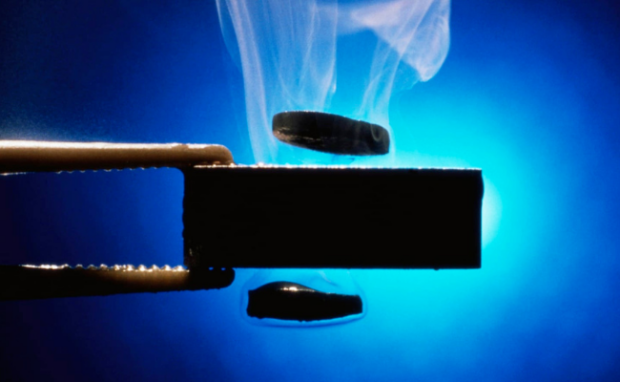LK-99 could be a bigger tech revolution than AI
South Korean scientists published two studies regarding a superconductor that functions without extreme cooling. They shared video proof showing the minuscule LK-99 fragment floating on a magnet due to the Meissner effect. The researchers wrote, “We believe that our new development will be a brand-new historical event that opens a new era for humankind.”
The world has been marveling at the rapid advancement of ChatGPT and other AI systems. Yet, some of the most significant scientific breakthroughs seem mundane to most people. If researchers prove and recreate LK-99 reliably, it could dramatically change every device we use daily, from smartphones to trains!
This article will explain how superconductors work and why they’re significant before I discuss LK-99. Then, I will show you how you can (probably) create LK-99 and cover the numerous experts trying to validate this discovery.
What are superconductors?

Photo Credit: coopwb.in
LK-99 is supposedly a superconductor that functions without extremely low temperatures. Most people won’t see its significance, so let’s briefly discuss what conductors are.
Every device has conductors, materials that allow electricity to flow through them. For example, your lightbulb relies on copper wires, which are conductors.
Most materials have resistance, a tendency to block a specific amount of current. Their atoms move and bump into each other as they receive electrical charges.
That movement expends energy flowing through them, so there’s less going to a specific component. Through the years, we’ve made materials with less resistance.
You may also like: How to check PC temperature
They let more electricity flow through them to supply the energy complex machines require. For example, your phone relies on these high-tech conductors to power its compact and powerful processor.
Meanwhile, superconductors are materials and devices that have zero resistance. They function because we subject them to extremely low temperatures.
Subzero conditions reduce the “atom movement” that causes energy loss, allowing experts to power supercomputers properly. However, those conditions are only practical for industries with massive financial backing, such as scientific research organizations and tech firms.
Why does LK-99 excite scientists worldwide?

Photo Credit: thedailybeast.com
You would not believe how many scientists are trying to recreate LK-99 in their laboratories. The researchers published their papers in July, and scientists proved their validity a week later!
At the time of writing, the US Lawrence Berkeley Laboratory and the Chinese Huazhong University of Science and Technology claim to have successfully replicated the South Korean discovery.
The Huazhong researchers have a unique way of proving their findings. They posted a demonstration video on Bilibili, China’s alternative to YouTube.
It shows how their LK-99 sample reacts to the magnet’s magnetic field by floating. This phenomenon is called the Meissner effect. Do you want to make some at home?
Tom’s Hardware shared the method of synthesizing this wonder superconductor. Combine copper phosphide (Cu₃P) and lanarkite (Pb₂SO₅). Then, bake it using a 4-day, multi-step, solid-state synthesis process.
Believe it or not, Russian soil scientist Iris Alexandra claims she recreated LK-99 on her kitchen counter. Moreover, online people know her as an anime catgirl.
The material excites scientists due to its revolutionary potential. For example, we could significantly reduce the cost of creating powerful gaming PCs.
You may also like: Twitter will let users publish articles
Modern ones require powerful fans and cooling systems, occupying much space and consuming extra energy. An LK-99 system could enable computers to run more powerful processors without expensive temperature regulators.
Applying that to phones could make them significantly more powerful. As a result, smartphones could become as powerful as regular desktop computers.
It may enable more advanced technologies like magnetic levitation or maglev trains. We could create rails with LK-99 to enable locomotives to hover over them. That could make trains faster than ever, letting them function regardless of weather or terrain.
Conclusion
South Korean researchers have allegedly developed a superconductor called LK-99 that functions without extreme cooling. As a result, it could transform our technologies by making them more energy efficient and powerful.
However, some experts like Jens Koch, a physics professor at Northwestern University, remain skeptical. “Some of my colleagues have already voiced concerns about the data presented by the South Korean group,” he said.
Nevertheless, LK-99 could become a technological breakthrough as significant, if not more than generative AI. Check out more digital tips and trends at Inquirer Tech.